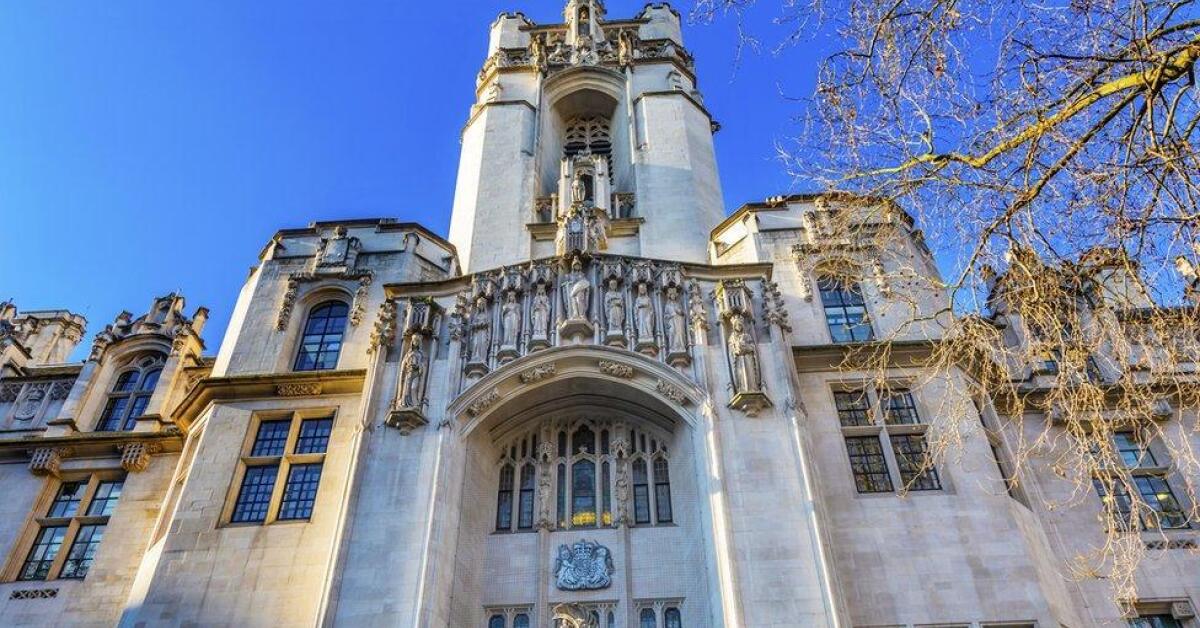UK Supreme Court Divorce Ruling Clarifies Division of Assets – But Leaves Questions Unanswered

A landmark decision from the UK Supreme Court has set a precedent for how assets are divided on divorce, particularly in cases involving wealth accumulated before marriage. The judgment, delivered in the case of Clive and Anna Standish, offers new clarity on the treatment of “non-matrimonial property,” but also highlights the ongoing uncertainty in divorce law that continues to affect couples across England and Wales.
The Standish Case: £78 Million in Dispute
Clive Standish, former chief financial officer of UBS, transferred £78 million in investments to his wife Anna in 2017. The couple, who married in 2005, began divorce proceedings in 2020.
The central legal issue was whether these transferred assets were:
- Matrimonial property – to be shared equally as part of the couple’s financial settlement; or
- Non-matrimonial property – belonging to one spouse alone, except where needed to meet the other’s financial needs.
The trial judge initially awarded Anna £45 million, but this was cut by the Court of Appeal to £25 million. On 2 July 2025, the Supreme Court upheld the £25 million award, ruling that most of the transferred wealth was non-matrimonial.
Why the Supreme Court Drew the Line
The Court focused on intention and use. Clive had transferred the assets to Anna primarily:
- To avoid inheritance tax, and
- For the benefit of their children.
Crucially, the Court found that the couple had not truly shared or “matrimonialised” these investments in their married life. As such, the assets were excluded from the equal division starting point.
This outcome reinforces the distinction between:
- Matrimonial property: Wealth generated during the marriage as part of the marital partnership.
- Non-matrimonial property: Pre-marital wealth, inheritances, or gifts that have not been integrated into the couple’s shared finances.
Why This Ruling Matters Beyond the Super-Rich
Although the sums involved in the Standish case were eye-watering, the precedent affects couples across the financial spectrum. The ruling clarifies that not all assets are automatically “up for grabs” in a divorce.
For example:
- If one spouse inherits money but keeps it in a separate account, it may remain non-matrimonial.
- If that same inheritance is used to buy the family home, it could become matrimonialised and subject to division.
- Family businesses founded before marriage may also be protected—unless they were run jointly as part of the marital life.
This matters particularly in mid-wealth divorces, where pensions, inheritances, and second homes are often the biggest sources of dispute.
“Matrimonialisation” – Still a Grey Area
While the ruling clarified some points, it also left open the fuzzy question of when an asset becomes matrimonial. Courts will continue to consider:
- The intention behind transferring or sharing an asset.
- How the asset was actually used by the couple.
- Whether the asset was kept separate or merged into family finances.
Lawyers note that this lack of precision means many cases will still hinge on fact-specific arguments.
Implications for Prenuptial Agreements
Family lawyers have hailed the decision as a “victory for pragmatism”, particularly because it helps couples draft more watertight prenuptial and postnuptial agreements.
- Clearer boundaries between matrimonial and non-matrimonial property mean prenups can better predict likely outcomes.
- Wealthy individuals (and their families) can protect assets intended for future generations.
- Couples can structure tax and estate planning with greater certainty.
However, lawyers also caution that prenups in England and Wales are not automatically binding—they must still meet fairness requirements and be upheld by a judge.
The Wider Problem: Patchwork Divorce Law
The Standish ruling shines a light on a broader issue: England and Wales lack a cohesive framework for financial settlements on divorce.
The Law Commission, in a December 2024 report, warned that the current system leaves couples facing uncertainty and unpredictability. Judges have vast discretion, which leads to:
- Inconsistent outcomes in similar cases.
- Long and expensive litigation for couples who cannot agree.
- Greater difficulty for lawyers in advising clients with confidence.
The Commission recommended potential reforms to simplify and codify the principles of financial division, but successive governments have so far avoided major family law reform.
Practical Lessons for Divorcing Couples
Whether you’re dividing millions or modest savings, the Standish case highlights some key takeaways:
- Don’t assume a 50/50 split applies to everything. Only matrimonial property is divided from an equal starting point.
- Keep inherited or gifted assets separate if you want them protected. Using them for joint purposes risks them becoming matrimonialised.
- Intention matters. If you transfer or share assets for tax or estate planning, keep records of your purpose and how the money was used.
- Prenups can help. While not ironclad, a properly drafted prenup can significantly strengthen your position.
- Needs still come first. Courts can override non-matrimonial protection if the financially weaker spouse’s needs cannot be met otherwise.
A Call for Reform
The Supreme Court ruling provides clarity, but it also underlines the piecemeal nature of family law development. Leaving critical questions to be resolved case-by-case in the courts is costly, uncertain, and stressful for families.
Family lawyers continue to call for:
- Statutory definitions of matrimonial vs non-matrimonial property.
- Greater certainty around prenups.
- A clearer framework for judicial discretion.
Until then, couples will remain at the mercy of complex and sometimes unpredictable rulings.
Conclusion: Knowledge is Power in Divorce
The Standish case may have involved extraordinary wealth, but its lessons apply broadly: what you bring into a marriage is not always treated the same as what you build together.
Understanding the difference between matrimonial and non-matrimonial property—and documenting how assets are used—can save couples from years of litigation and uncertainty.
At Parachute Law, we advise clients daily on financial settlements, prenuptial agreements, and divorce strategy. Our goal is to ensure you understand your rights, protect your assets, and achieve a settlement that secures your future.
Contact our family law team today for clear, practical advice before making financial decisions in divorce.
Related Articles:
Protect Your Future: Why a Pre-nup or Post-nup Could Be One of the Smartest Legal Steps You Take
Pre-Nups vs Post-Nups: What’s the Difference — and Why You Might Need One


